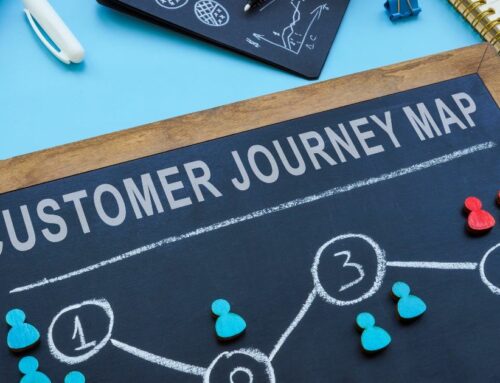In today’s digital landscape, where consumers are constantly bombarded with marketing messages, building and maintaining strong relationships between consumers and brands is more crucial than ever. One powerful tool that marketers have at their disposal is first-party data. In this article, we will explore how to leverage first-party data solutions to enhance consumer-to-brand relationships and delve into practical strategies for effective implementation.
Understanding How to Leverage First-party Data
What is First-party Data?
First-party data refers to the information that companies collect directly from their audience. This data is obtained through various touch-points such as website interactions, social media engagement, and customer interactions. Unlike third-party data, which is acquired from external sources, first-party data is owned and controlled by the brand.
The Value of First-party Data in Marketing
First-party data provides invaluable insights into consumer behavior, preferences, and interests. Leveraging this data allows brands to create highly targeted and personalized marketing campaigns. By understanding their audience on a granular level, brands can tailor their messaging to resonate with individual consumers, fostering a deeper connection.
Benefits of Using First-party Data for Stronger Consumer Relationships
There are numerous benefits to using first-party data for building stronger consumer relationships. Here are some key advantages:
- Personalization: First-party data allows brands to personalize the customer experience across all touchpoints. By analyzing First-party data, brands can understand individual customer preferences and tailor their messaging, recommendations, and offers accordingly. This personalized approach fosters stronger connections and encourages customer loyalty.
- Improved Targeting: First-party data enables brands to target their marketing campaigns more effectively. By utilizing First-party data insights, brands can identify their ideal customer profiles and tailor their campaigns to reach these individuals with relevant messages. This targeted approach leads to higher engagement and better conversion rates.
- Deeper Customer Insights: First-party data provides valuable insights into consumer behavior and preferences. By analyzing purchase history, website browsing data, and customer feedback, brands can gain a deeper understanding of their customers’ needs and motivations. This knowledge empowers brands to tailor their products, services, and marketing strategies to better meet customer expectations.
- Increased Brand Trust and Transparency: By collecting First-party data directly from customers, brands can build trust and transparency. Consumers feel more connected to brands that are open and transparent about their data practices. This trust is essential for building long-term relationships and customer loyalty.
- Enhanced Customer Engagement: First-party data can be used to personalize and enhance customer engagement efforts. By tailoring content to individual interests and preferences, brands can increase customer engagement and satisfaction. This translates to higher retention rates and increased customer lifetime value.
Strategies for Leveraging First-party Data
Brands can leverage first-party data effectively to build stronger consumer relationships by implementing the following strategies:
- Develop a First-party data Strategy: Establish a clear First-party data strategy that outlines the goals, data collection methods, and data governance policies. This ensures that First-party data is collected ethically and used efficiently.
- Integrate Data Across Systems: Integrate First-party data across all systems, including CRM, marketing automation, and customer service platforms. This enables a holistic view of the customer and facilitates personalized experiences across all touchpoints.
- Invest in Data Analytics: Invest in data analytics tools and technologies to analyze First-party data and extract valuable insights. This allows brands to understand their customers better and tailor their strategies accordingly.
- Personalize Marketing and Communication: Utilize First-party data to personalize marketing campaigns and communications. This includes tailoring content, offers, and messaging to individual customer preferences.
- Build a Culture of Data-Driven Decision Making: Foster a culture of data-driven decision-making within the organization. This ensures that First-party data insights are used to inform all aspects of the business, from product development to marketing and customer service.
- Build Trust and Transparency: Be transparent about data collection practices and ensure that customers understand how their data is used. This helps build trust and strengthens relationships.
- Use First-party data for Customer Service: Utilize First-party data to personalize customer service experiences. This includes providing proactive support, anticipating customer needs, and resolving issues efficiently.
- Continuously Improve and Adapt: Regularly review and refine First-party data strategies based on data insights and customer feedback. This ensures that brands are constantly adapting and improving their approach to building stronger relationships.
Examples of Successful First-party Data Usage

Several brands have successfully leveraged first-party data to build stronger consumer relationships. Here are a few examples:
- Netflix: Netflix uses first-party data to personalize movie and TV show recommendations, leading to increased engagement and customer satisfaction.
- Amazon: Amazon utilizes first-party data to recommend products based on customers’ past purchases and browsing history, significantly boosting sales and customer loyalty.
- Starbucks: Starbucks uses first-party data to personalize the customer experience through its mobile app, offering rewards and customized drink suggestions.
Building Trust Through Personalization
The Personalization Imperative
Consumers today expect personalized experiences. In fact, studies show that a significant percentage of consumers are more likely to engage with brands that deliver personalized content. First-party data allows marketers to understand their audience’s preferences, enabling them to create personalized experiences that resonate with individual consumers.
Tailoring Content and Recommendations for first-party data
Utilizing first-party data, brands can analyze past purchase behavior, browsing history, and demographic information to tailor content and product recommendations. Whether it’s suggesting products based on previous purchases or delivering personalized content recommendations, brands can enhance the overall user experience and build trust by demonstrating a deep understanding of their audience.
Enhancing Customer Engagement
Creating Relevant and Timely Messaging
First-party data enables brands to send targeted messages at the right time. By analyzing customer behavior and engagement patterns, marketers can identify optimal times to reach out to their audience. This ensures that messages are not only relevant but also delivered when consumers are most receptive, increasing the likelihood of positive engagement.
Developing Targeted Email Campaigns
Email marketing remains a powerful tool for building and nurturing customer relationships. Leveraging first-party data allows brands to segment their email lists based on various factors such as purchase history, location, and preferences. This segmentation enables the creation of highly targeted email campaigns that speak directly to the individual needs and interests of different consumer segments.
Improving Customer Retention

Understanding Customer Feedback
First-party data includes valuable information gathered from customer feedback and interactions. Analyzing this data can provide insights into customer satisfaction levels, areas for improvement, and potential pain points in the customer journey. Brands can use this information to address concerns, enhance their products or services, and ultimately strengthen their relationship with existing customers.
Loyalty Programs and Personalized Incentives
By leveraging first-party data, brands can design loyalty programs and incentives that resonate with their audience. Understanding customer preferences allows for the creation of personalized rewards and promotions, making customers feel valued and appreciated. This not only fosters loyalty but also encourages repeat business.
Compliance and Data Privacy
Importance of Data Privacy with First-party data
As data privacy concerns continue to rise, brands must prioritize the responsible use of first-party data. Establishing transparent data practices and obtaining explicit consent from users builds trust and ensures compliance with evolving data protection regulations.
Implementing Robust Security Measures
To maintain the trust of their audience, brands must invest in robust cybersecurity measures. Ensuring the security of first-party data is not only a legal requirement but also a fundamental aspect of building and preserving strong consumer relationships.
Future Trends in 1st Party Data Utilization
Artificial Intelligence and Predictive Analytics
The integration of artificial intelligence (AI) and predictive analytics is poised to revolutionize the way brands leverage first-party data. AI algorithms can analyze vast amounts of data to predict consumer behavior, enabling brands to proactively address customer needs and deliver personalized experiences.
Cross-Channel Integration
The future of first-party data lies in its seamless integration across various marketing channels. Brands that can effectively connect data from online and offline touchpoints will have a comprehensive understanding of their audience, allowing for more cohesive and personalized consumer experiences.
Conclusion
In conclusion, leveraging first-party data solutions is paramount for building stronger consumer-to-brand relationships in the digital age. By harnessing the power of this data, brands can personalize experiences, enhance customer engagement, improve retention, and navigate the evolving landscape of data privacy. As technology continues to advance, the strategic use of first-party data will remain a cornerstone of successful and customer-centric marketing strategies. Embracing these trends and adopting a proactive approach to data management will undoubtedly position brands at the forefront of the ever-changing digital marketing landscape.
Have a project that you’re looking to field?
Logit can help. Just fill out the form below and a Logit Group team member will be in contact with you shortly. Get a quote today.





